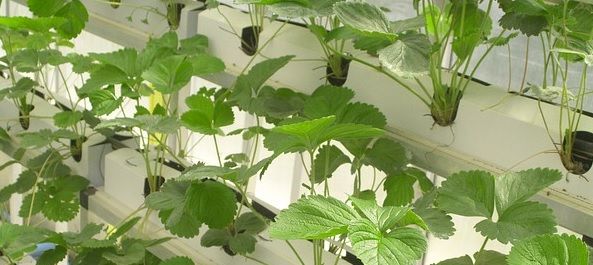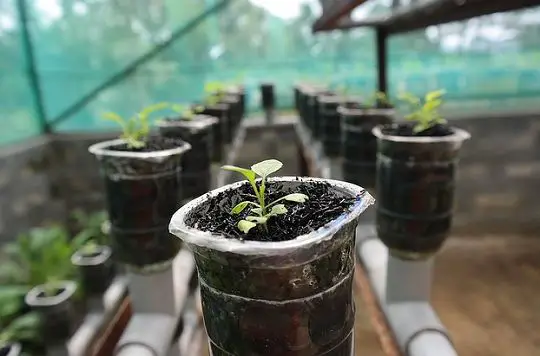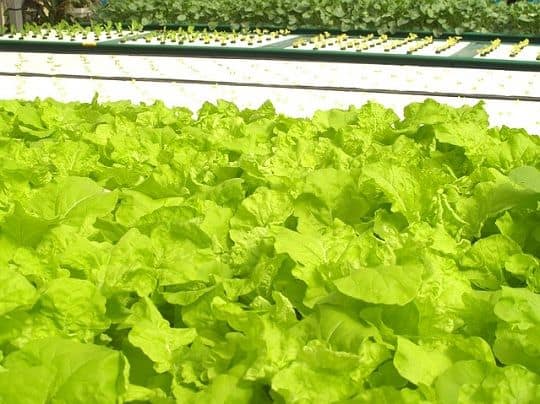When the plants are grown with the medium like sand, gravel or water but without soil is known as hydroponics. On the other hands, aquaponics is considered as the subset of the hydroponics, where the plants are grown in water, (without soil), and nutrients are provided from the by-products of fishes.
We all are aware of the process known as photosynthesis, where the plants produce oxygen and energy in the form of glucose, by using sunlight, water and other chemicals, but there is no requirement of soil. Therefore, it can be said that plants can grow in the absence of soil also, but if they get the other necessary factors like temperature, light, air, water and other nutrients.
These methods are usually applied as indoors or in a greenhouse, so the growers have to take care of the environmental factors that enhance the growth such as, lights, temperature, climates, lights, etc.
Both the techniques, that are hydroponics and aquaponics are the subset of hydroculture gardening method; in this method, the plants are cultivated in water but without the use of soil. The nutrients in the medium (water) are timely added so that proper growth of the crops can be maintained. Hydroculture is the Greek word where ‘hudor‘ means water and ‘ponos‘ means labour.
But all these terms fall under the main category that is ‘horticulture‘ – the branch of agriculture that deals with the gardening, growing fruits and vegetables and its management. The practice of growing of crops, fruits and vegetables can be done commercially as well as personally.
In this context, we will be looking into the differences between the intermediate words, that are hydroponics and aquaponics with their advantages and what kind of vegetables can be grown through this method.
Content: Hydroponics Vs Aquaponics
Comparison Chart
| Basis for Comparison | Hydroponics | Aquaponics |
|---|---|---|
| Meaning | The technique of growing plants in a soil-free medium and involves the use of water is known as hydroponics. | The combined technique of growing plants in a soil-free medium and the cultivation of fish, where the wastewater of fish tank is used as an edible medium for growing plants, this is known as aquaponics. |
| It involves | The supply of water, with the addition of some nutritive media. | Proper water supply which gets its nutrients from the waste matter collected from the fish tank. |
| Advantages | 1. Hydroponics is best for the areas where good quality of soil is not present. 2. The high amount of crops can be yielded. 3. Saves water. 4. Less and initial expense. 5. One can gain technical knowledge and experiences. | 1. With aquaponics, harvesting of the fish along with the crop cultivation, can be done. 2. Soil is not needed. 3. No need for continuous recycling and also less water is used as additional water is only required when the water has been lost due to evaporation. |
Definition of Hydroponics
Hydroponics is one of the trending method used for growing various plants, and this is a very easy technique with less requirement of resources and hard work.
This method involves simple steps like, seeds are placed in a nutrient-enriched medium of water in growing trays that is soil-free, or some may use sand or gravel. More nutrients can be added in the water tank as per requirement. Through a pump, the water is provided to the growing trays that provide nutrients to the root system of growing plants. Timely the water is also recycled through various filtration processes and is reused.
Tomatoes, potatoes, strawberries, cabbage, cauliflower, mint, basil, lettuce, green beans can be grown with this method, although items like pumpkins, melons, and corns require much space to grow and therefore these cannot be grown.
Definition of Aquaponics
Aquaponics is the integrated method of the aquaculture and the hydroponics that involves the grow trays like hydroponics. Still, the nutrient-enriched medium is available from the tank where fishes are grown. In this method, the excreta of the fish and other waste matter is used as the main nutritive source although the water of the fish tank is frequently changed so that fishes can flourish and survive in freshwater.
This method also follows simple and easy steps, like firstly, fished are gown is a fish tank, that produces waste. The waste is treated with bacteria, that converts the waste into nutrients. After that, nutrients are transferred to the roots of the growing plants in the grow tray. Later the roots also filter the water, and then the water is again circulated in the fish tank.
Generally, the waste of the fish tank is thrown and is wasted, but through this method, even a drop is not wasted as the excreta, and other waste matters are collected and treated with proper bacteria that convert the matter into rich nutritive medium, and that can be used for growing plants. Also, the water of the tank is timely to replace, to maintain the ecosystem of the fishes.
So, with the time the freshwater of the fish tank gets filled with the waste matter excreted by the fishes and which is used by the plant’s and this cycle is repeated again and again.
Spinach, lettuce, kale, swiss chard, wheatgrass, radish sprouts, basil, chives, mint, arugula, pak choi, can be grown with this method in a small system, while with the larger system, tomatoes, peas, broccoli, cauliflower, cabbage, cucumbers, peppers, squash, can also be grown.
Key Differences Between Hydroponics and Aquaponics
Upcoming points will exhibit the essential differences between hydroponics and aquaponics:
- The technique of growing plants in a soil-free medium, involving the use of water and other nutrients is known as hydroponics. On the other hand, the combined technique of growing of plants in a soil-free medium along with the cultivation of fish, where the wastewater of fish tank is used as a nutritive medium for growing plants, this is known as aquaponics.
- Hydroponics involves the supply of water, with the addition of some nutritive media, whereas proper water supply which gets its nutrients from the waste matter collected from the fish tank.
- Hydroponics is advantageous in various field as it is best for the areas where good quality of soil is not present, through this method high amount of crops can be yielded; it also saves water, there is the very less and initial expense, and one can gain technical knowledge and experiences with such technologies. On the other hand, with aquaponics, harvesting of the fish along with the crop cultivation can be done, secondly, the soil is not needed; and no need of the continuous recycling and also less water is used as additional water is only required when the water has been lost due to evaporation.
Conclusion
While both the techniques are soil-free and are used to cultivate organic vegetables and herbs, these methods are very advantageous in many ways as it does not needs soil, which in turn will reduce the manual work required in the field.
It also reduces the use of various chemicals for the growth of crops and so our land will also replenish and remain chemical-free. However, these techniques are more trending nowadays, especially between the peoples who are interested in farming but lack the proper space or due to any factors unable to do in large scale.




Leave a Reply